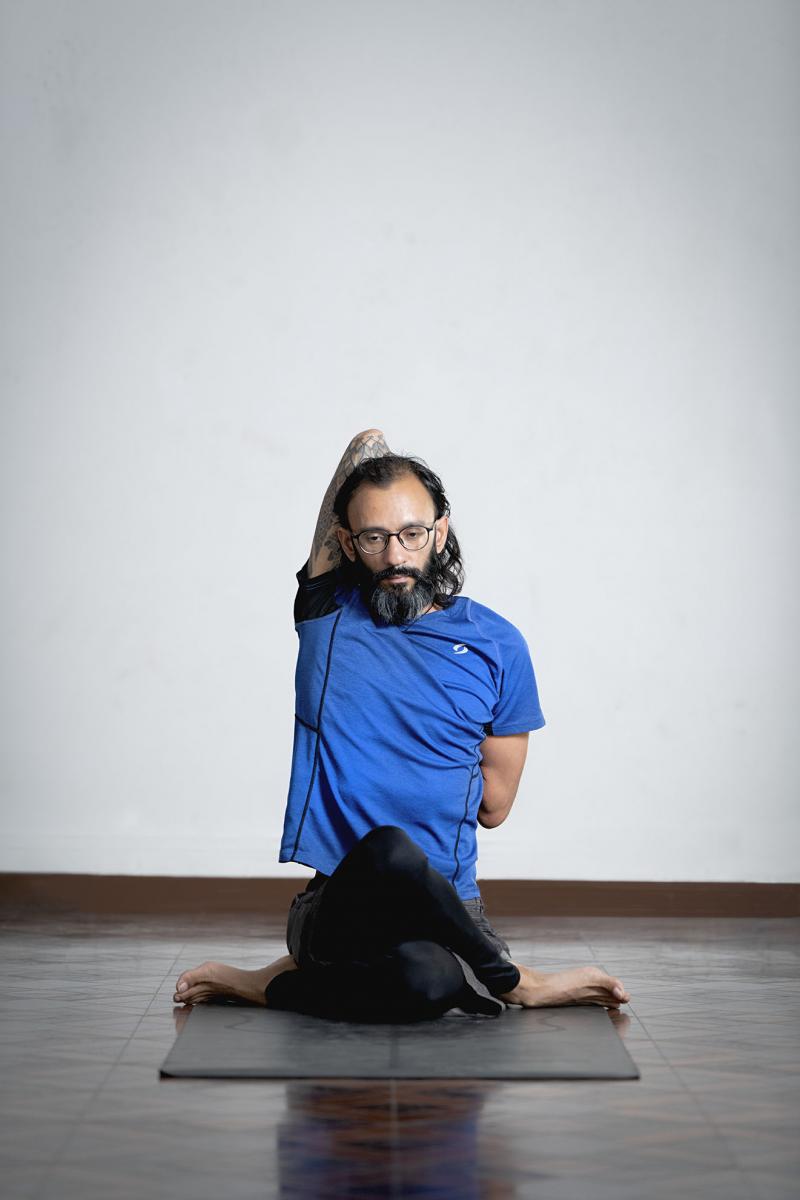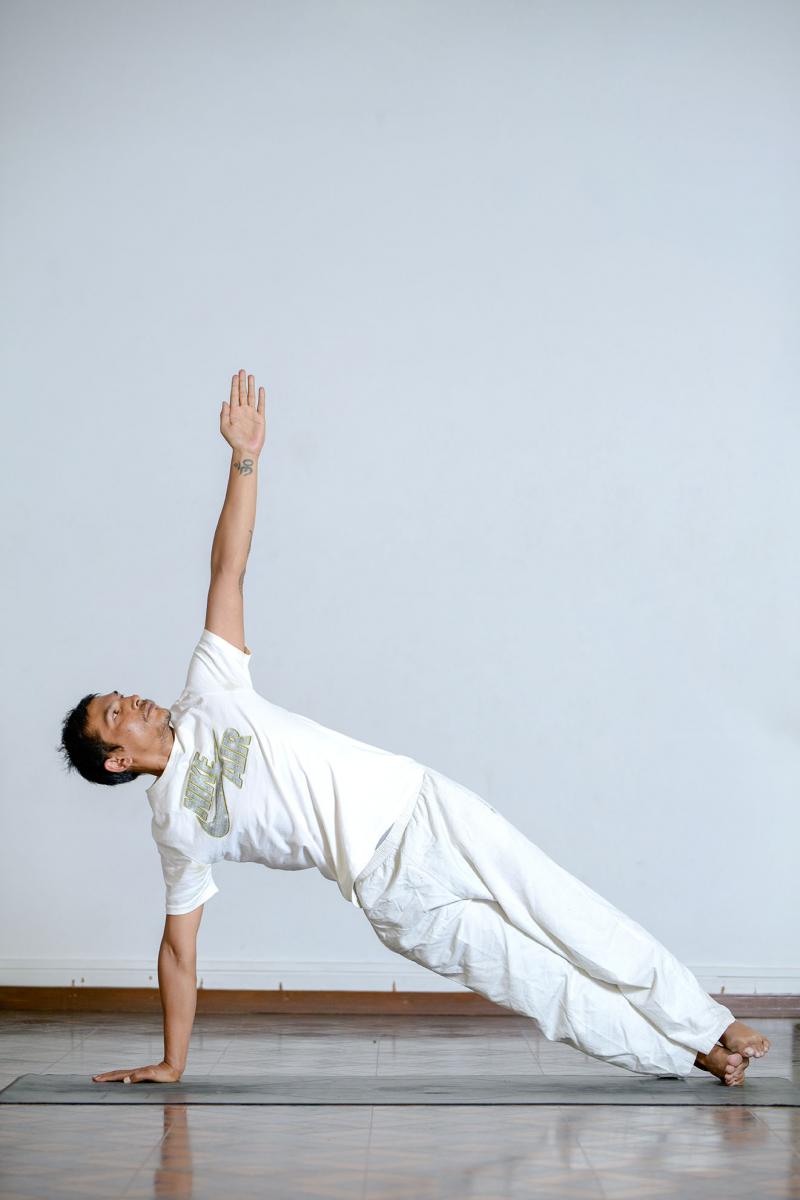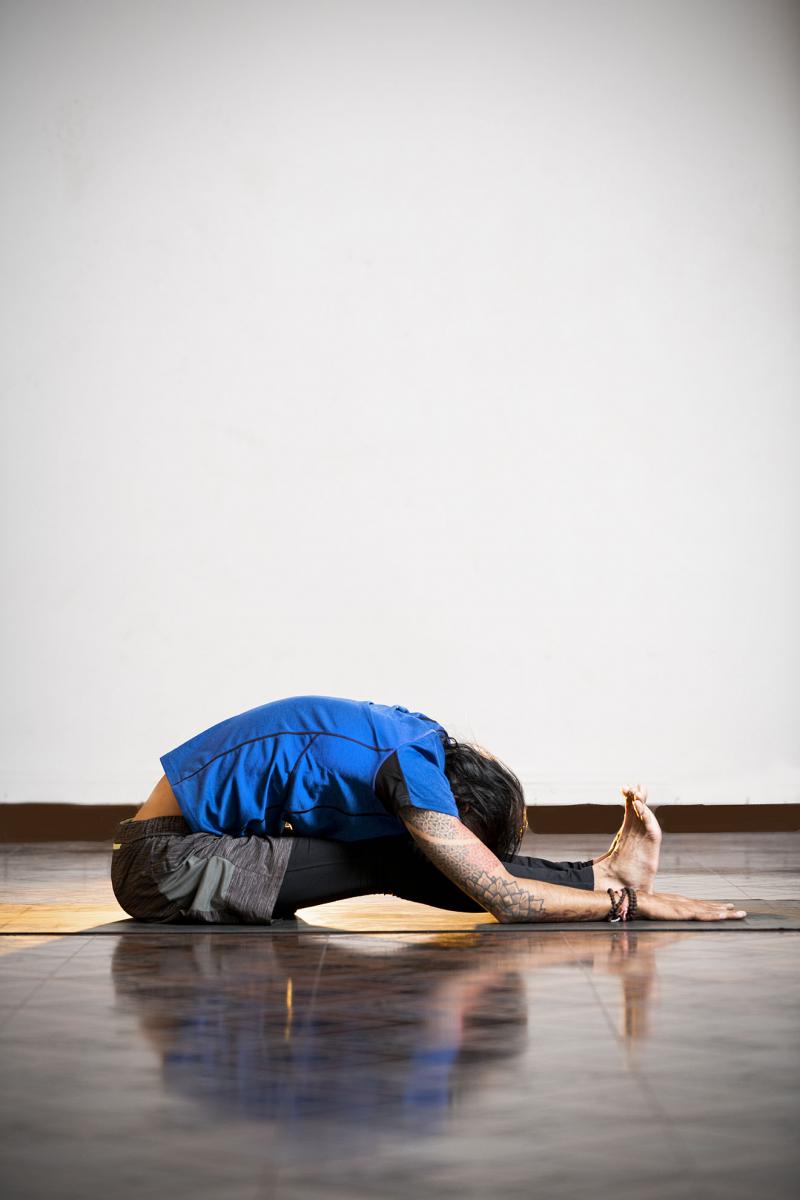Yoga: Beyond Physical Wellbeing
- What is Yoga for you?
Yoga teaches us a way of life that aims to “yoke” or “create a union”, by a discipline of the body, the mind (emotions), and senses, so that all aspects of our daily life work in harmony inculcating an integrated and wholistic living. Yoga as a wholistic concept then integrates and encompasses an important aspect of cultivating a healthy lifestyle, nurturing happiness & well-being, and creating balance in our daily life, again at all levels - physical, mental, and emotional.
Yoga is also a spiritual path whose aim is the individual realization in consciousness, where the principles and practices of Yoga are made the foundations of the spiritual life. So, as human beings, we hope to reflect the higher states of consciousness along with our humanity.

- What is Prāṇā and Prāṇāyāma?
- is the vital life force/energy which animates every being and within the system of the physical body, this is our “breath”. Our breath is the most overt and controllable physical manifestation of the flow of Prāṇā. It is this vital life force that gives us the ability to live and breathe, move about, and function in the world. We receive most of the Prāṇā we use through the air we breathe, although some are received through food and water and some by simple absorption through the skin.
Prāṇāyāma is the “Science of Breath” and Prāṇāyāma consists of the 4 aspects of the breath: Puraka (inhalation), Anatara Khumbhaka (retention after inhalation), Rechaka (exhalation) and Bahya Khumbhka (retention after exhalation).
In Yoga Prāṇāyāma, the whole breathing function is taken over by the higher brain (the prefrontal cortex) which is used by the conscious mind. When we are shallow breathers, special nerve receptors buried deep in the lungs are unaffected. Only when we breathe deeply in and out, are these inspiratory receptors and expiratory receptors called into activity. That activity is reflexogenic feedback from the lungs to a special breathing center, which is the respiratory center in the brain - communicating to this respiratory system to enhance the absorption of Prāṇā. It means to consciously restrain/control/ enhance the flow of Prāṇā within the physical body by practicing involved, deep, and slow controlled breathing.
Our mind is linked to the flow of Prāṇā within our physical body and through Prāṇāyāma Sadhana by restricting/slowing down this flow we can influence the mind and we can achieve much greater sensitivity, calmness, and serenity of the mind. It is also the bridge between the external and the internal practices in Yoga.

Method and a bit of description of one simple Asana.
- Paschimottanasana (Seated Forward Bend Pose) is a seated foundational pose with the sit bones rooted into the earth, legs extended forward and the upper body folded forward over the legs, forehead rest on the knees or below by bending the arms and griping the wrists beyond the outstretched feet.
Description:
The word "Paschimottanasana" is derived from three Sanskrit words. Paschima literally means west but here is the back of the body, uttana means to stretch, and asana means seat or pose. In this asana, the back of the whole body is intensely stretched, hence the name. Considering this fact, it is strongly recommended to practice a warm-up yoga routine to open those tight hamstrings and release the spine. In Paschimottanasana, keeping the spine horizontal, the back is kept straight in a forward bend, leading to a symmetrical extension of the muscles on either side of the spine. This keeps the heart at a lower level than the spine, keeping both the heart and spine healthy. Furthermore, bending from the pelvic region on the outstretched legs offers an intense stretch to the lower back, hips, and hamstrings. This improves both the blood circulation to the pelvic region and the strength and flexibility in the lower back and legs.
- What kinds of changes you have realized in yourself before and after Yoga?
My Yoga Sadhana has been an invitation to expand my awareness grow and continue to learn.

- What would you suggest for beginners about Yoga?
- Yoga is all about the “Practice” itself and I would encourage beginners to start by understanding the practice of breath discipline.
- “Be Patient”, everything comes with time and consistency and you grow a little every day. If you are not flexible today, if you are not as strong as you would like to be today, it’s going to happen when you keep practicing and keep showing up for yourself.
- Yoga is not just only about Asana (poses), it is also really about “Self-Acceptance”, knowing who you are on and off the mat, looking at whom you are being in the world, learning to be with yourself, learning to breathe with yourself and coming home to you.


